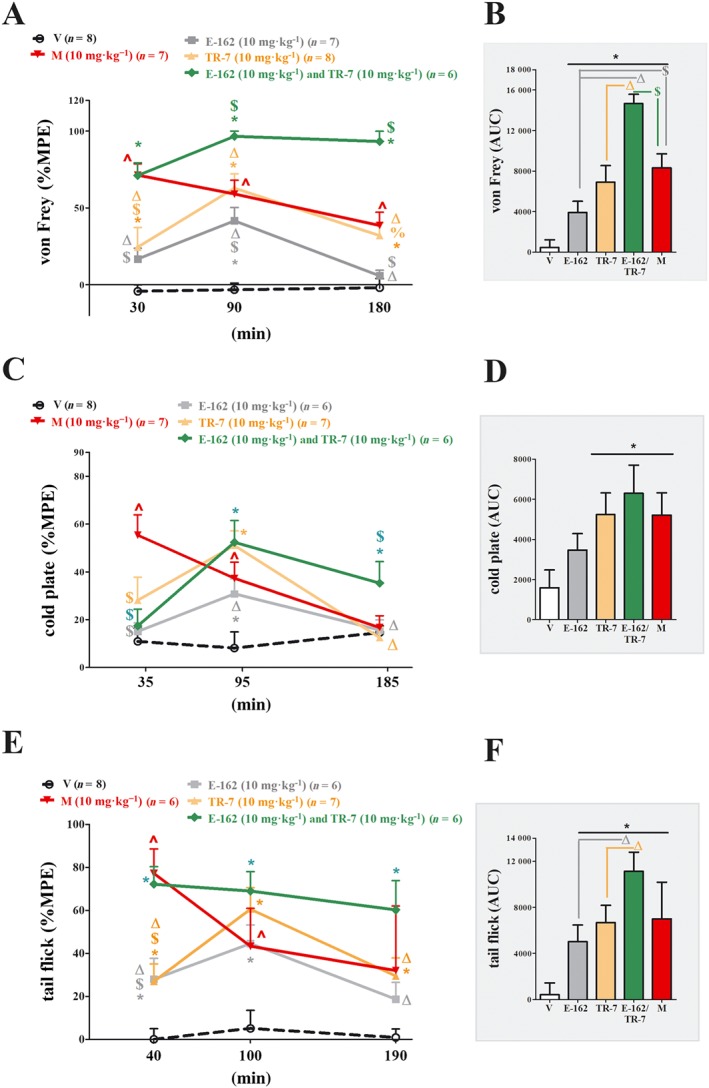Figure 3.

Comparison of the analgesic effects of administration of E‐162, TR‐7 or co‐administration of E‐162+TR‐7, with morphine in mice with CCI. The effects of single i.p. injection of E‐162 and TR‐7 or co‐administration of E‐162+TR‐7 (10 mg·kg−1 each) on mechanical (A, von Frey) and thermal (B, cold plate; C, tail flick) stimulus on day 7 following CCI to the sciatic nerve, were evaluated. The data are presented as means ± SEM . The results are presented as a percentage of the maximal possible effect [%MPE = 100% × (measured response − basal)∕(cut‐off value − basal)] of drug action (A, C, E), and the AUC for all tests was calculated (B, D, F). The group receiving morphine (M; 10 mg·kg−1, i.p.), was used as a positive control in this study. The analgesic effects of morphine were compared with vehicle (V; water)‐treated mice, which received water for injection as a vehicle . The results of the experiments were statistically evaluated using one‐way ANOVA and were further analysed with Bonferroni's post hoc test. * P < 0.05, significantly different from vehicle (25% DMSO/water)‐treated mice; # P < 0.05, significantly different from vehicle (water)‐treated mice; % P < 0.05, significant differences between E‐162‐treated and TR‐7‐treated mice; $ P < 0.05, significant differences between antagonist‐treated and morphine‐treated mice; Δ P < 0.05, significant differences between E‐162‐treated or TR‐7‐treated and E‐162+TR‐7‐treated mice. The number of animals used in the study is highlighted on the graph.
